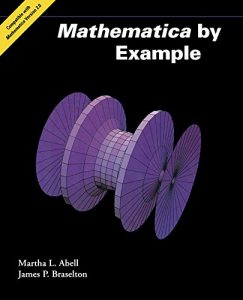Mathematica by Example presents the commands and applications of Mathematica, a system for doing mathematics on a computer. This text serves as a guide to beginning users of Mathematica and users who do not intend to take advantage of the more specialized applications of Mathematica.
The book combines symbolic manipulation, numerical mathematics, outstanding graphics, and a sophisticated programming language. It is comprised of 10 chapters. Chapter 1 gives a brief background of the software and how to install it in the computer. Chapter 2 introduces the essential commands of Mathematica. Basic operations on numbers, expressions, and functions are introduced and discussed. Chapter 3 provides Mathematica's built-in calculus commands. The fourth chapter presents elementary operations on lists and tables. This chapter is a prerequisite for Chapter 5 which discusses nested lists and tables in detail. The purpose of Chapter 6 is to illustrate various computations Mathematica can perform when solving differential equations. Chapters 7, 8, and 9 introduce Mathematica Packages that are not found in most Mathematica reference book. The final chapter covers the Mathematica Help feature.
Engineers, computer scientists, physical scientists, mathematicians, business professionals, and students will find the book useful.
The book combines symbolic manipulation, numerical mathematics, outstanding graphics, and a sophisticated programming language. It is comprised of 10 chapters. Chapter 1 gives a brief background of the software and how to install it in the computer. Chapter 2 introduces the essential commands of Mathematica. Basic operations on numbers, expressions, and functions are introduced and discussed. Chapter 3 provides Mathematica's built-in calculus commands. The fourth chapter presents elementary operations on lists and tables. This chapter is a prerequisite for Chapter 5 which discusses nested lists and tables in detail. The purpose of Chapter 6 is to illustrate various computations Mathematica can perform when solving differential equations. Chapters 7, 8, and 9 introduce Mathematica Packages that are not found in most Mathematica reference book. The final chapter covers the Mathematica Help feature.
Engineers, computer scientists, physical scientists, mathematicians, business professionals, and students will find the book useful.






